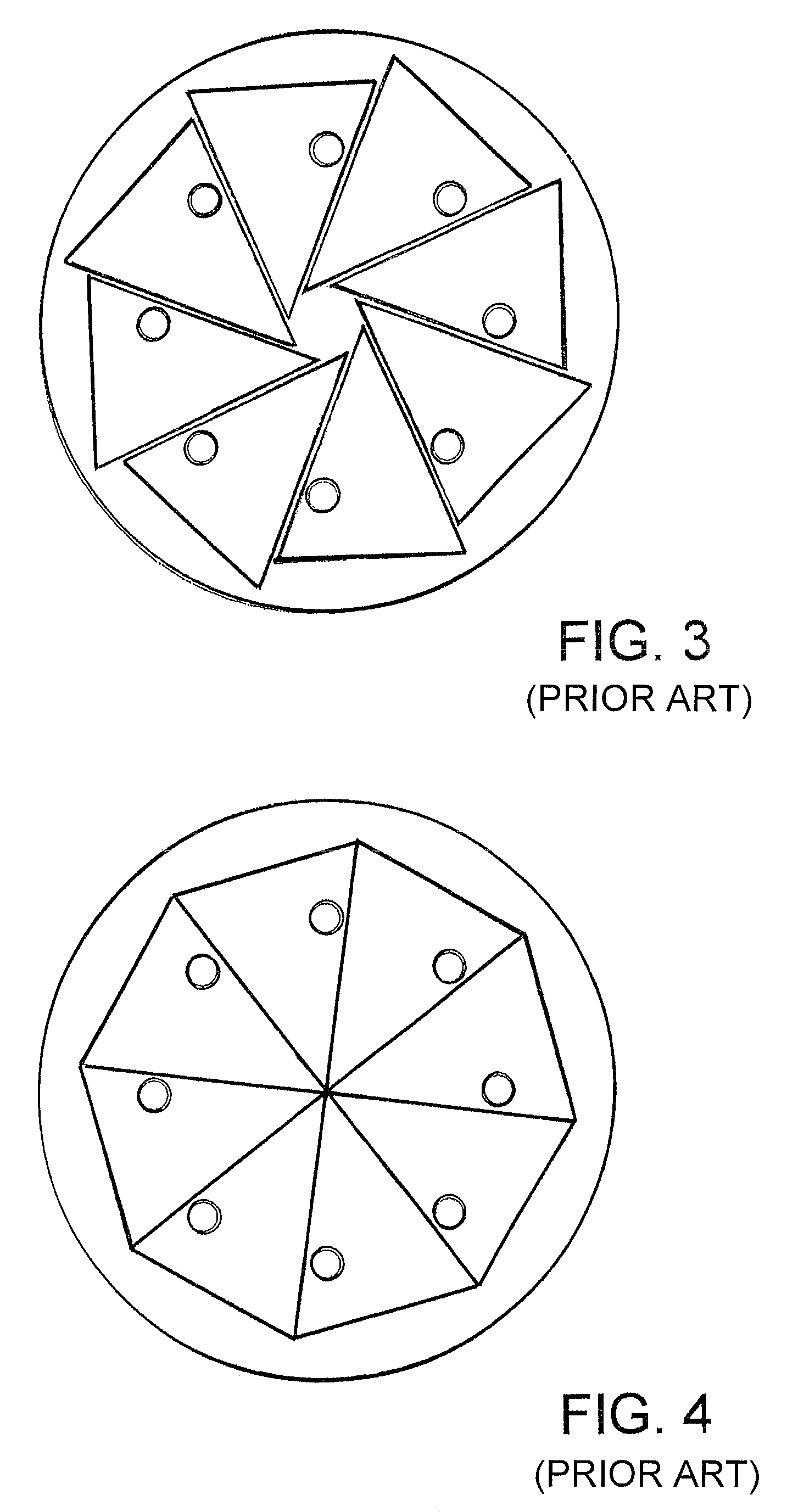Radial compression mechanism with optimum die-to-die gap
a compression mechanism and radial compression technology, applied in the field of mechanisms, can solve the problems of large gaps between the wedges, metal struts of the stent can move into the gap and be damaged, and the wedge-shaped working end typically does not provide a sufficiently accurate positional relationship
- Summary
- Abstract
- Description
- Claims
- Application Information
AI Technical Summary
Benefits of technology
Problems solved by technology
Method used
Image
Examples
Embodiment Construction
[0027]Turning now to the drawings, attention is first directed to FIGS. 11-17, which illustrate various perspective views of a radial compression mechanism 10 in accordance with the present invention. Mechanism 10 includes a housing 12 with a pair of spaced apart hinge plates 14 and 16. Hinge plate 16 has a product receiving opening 18 formed approximately centrally therethrough, an enlarged view of which can be seen in FIG. 12 Hinge plate 16 has a crank mechanism 20 mounted on the outer surface thereof that is coupled to rotatably drive a plurality of hinged or pivotally mounted die, designated 22. Each die 22 has a working surface 24 at an inner end and a pair of spaced apart pivot points 26 (seen for example in FIG. 15) at the other end. Each die 22 of the plurality of dies is mounted at one pivot point 26 by a pivot pin 28 engaged in hinge plate 14 and at the other pivot pin 26 by a pivot pin 28 engaged in hinge plate 16.
[0028]Referring specifically to FIG. 12, each die 22 is po...
PUM
| Property | Measurement | Unit |
|---|---|---|
| diameter | aaaaa | aaaaa |
| width | aaaaa | aaaaa |
| diameters | aaaaa | aaaaa |
Abstract
Description
Claims
Application Information
 Login to View More
Login to View More - R&D
- Intellectual Property
- Life Sciences
- Materials
- Tech Scout
- Unparalleled Data Quality
- Higher Quality Content
- 60% Fewer Hallucinations
Browse by: Latest US Patents, China's latest patents, Technical Efficacy Thesaurus, Application Domain, Technology Topic, Popular Technical Reports.
© 2025 PatSnap. All rights reserved.Legal|Privacy policy|Modern Slavery Act Transparency Statement|Sitemap|About US| Contact US: help@patsnap.com



